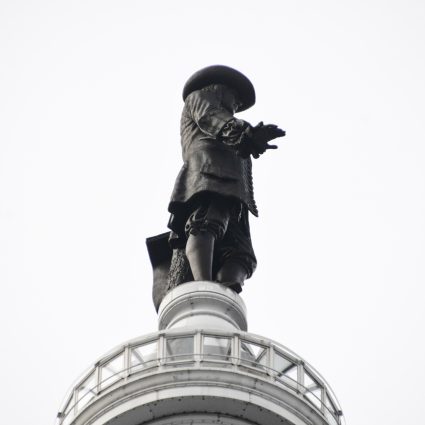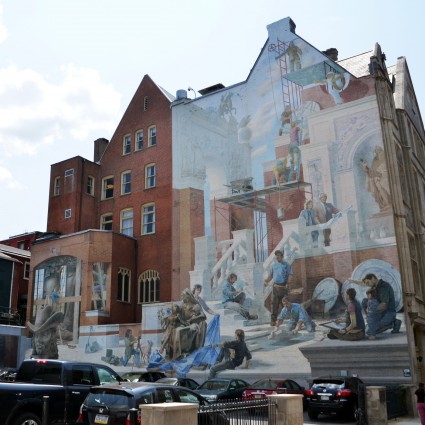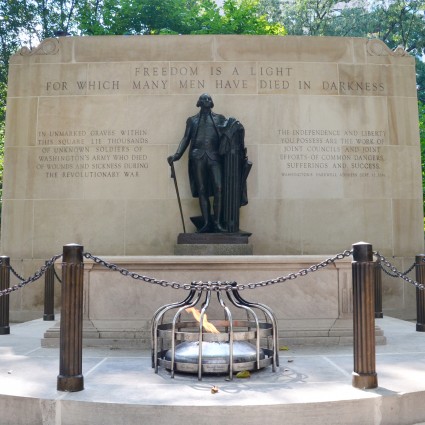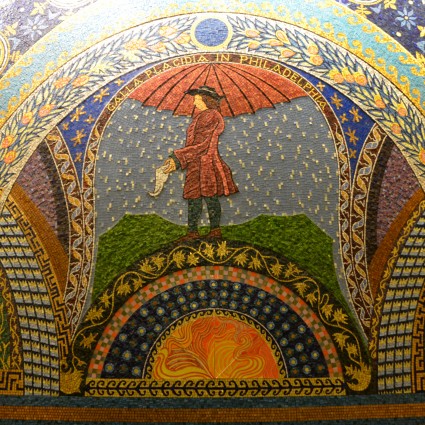Following a visit to Lord Le Despencer’s estate in Buckinghamshire, England, Benjamin Franklin wrote that his friend “has lately erected at Wycombe … a noble statue of William Penn holding in his hand a scroll.” When Lord Le Despencer’s successor redesigned the grounds of West Wycombe, he sold the statue for old metal.
John Penn, grandson of William Penn, came upon the work in a junk shop in London and purchased it for his house at Stoke Poges. Later he presented it to Pennsylvania Hospital, and it arrived in Philadelphia in 1804. Originally designed to be placed on top of a house with head facing downward, it no doubt influenced Alexander Milne Calder in the planning of his figure for City Hall.
Adapted from Public Art in Philadelphia by Penny Balkin Bach (Temple University Press, Philadelphia, 1992).



